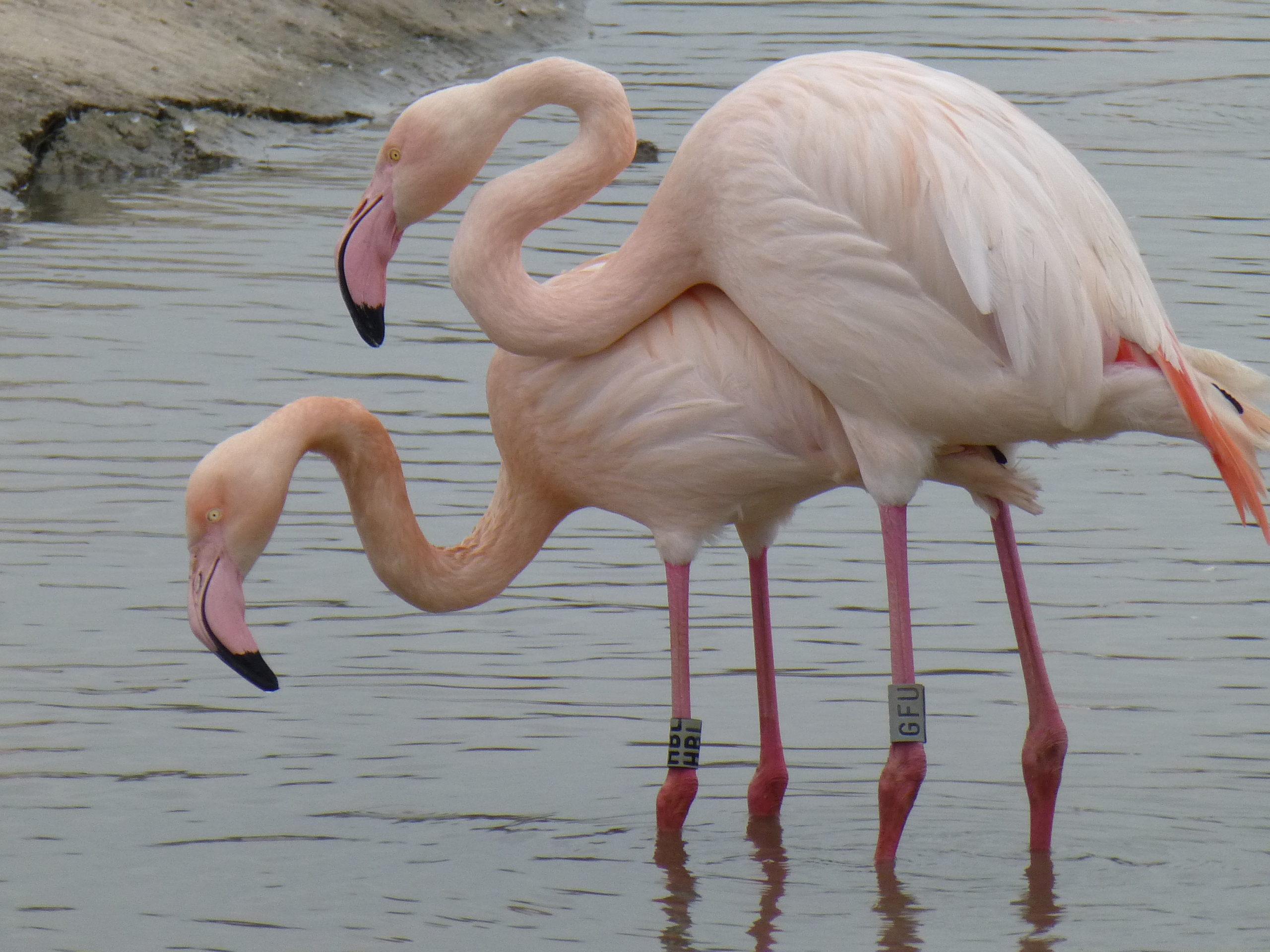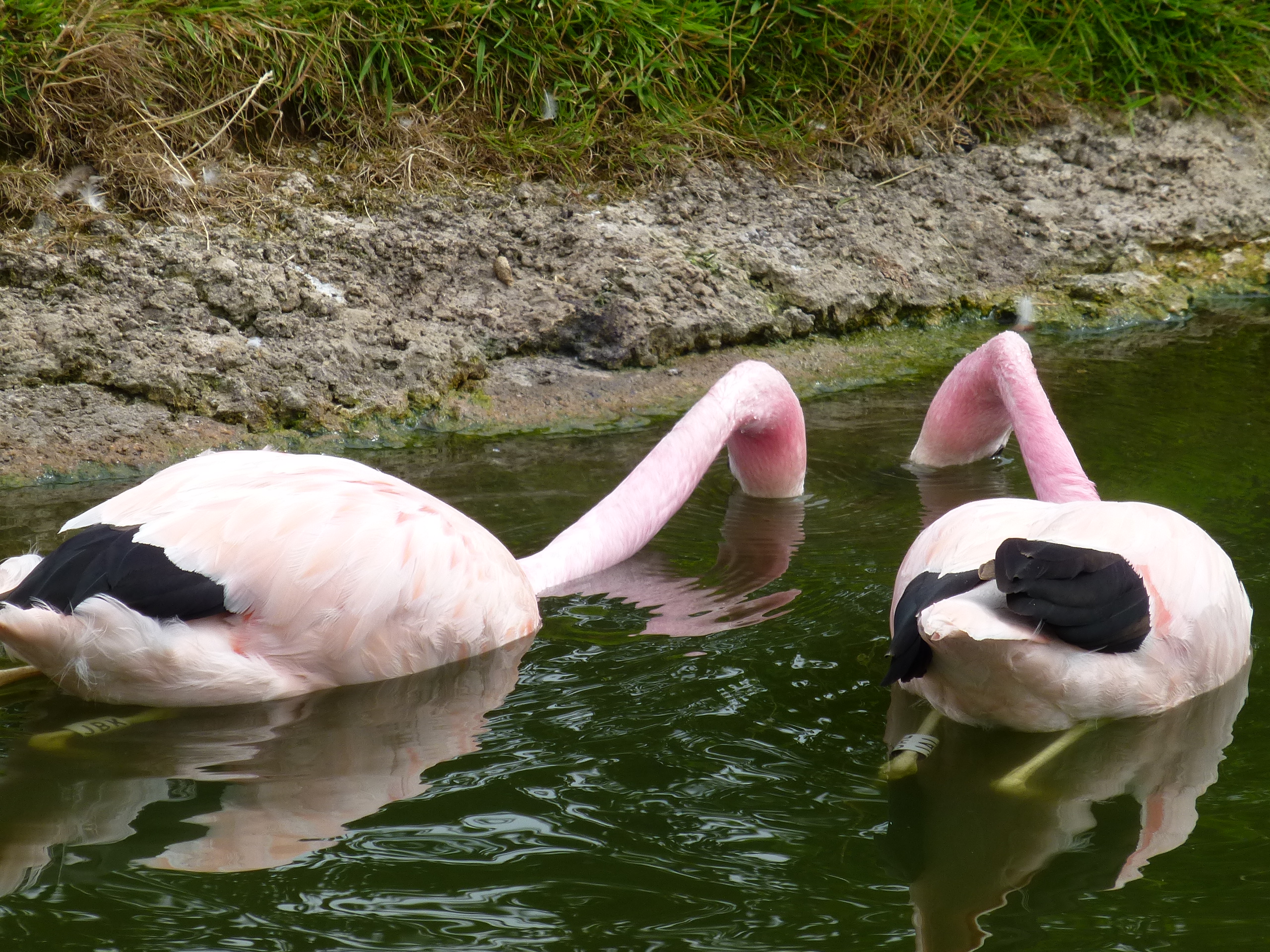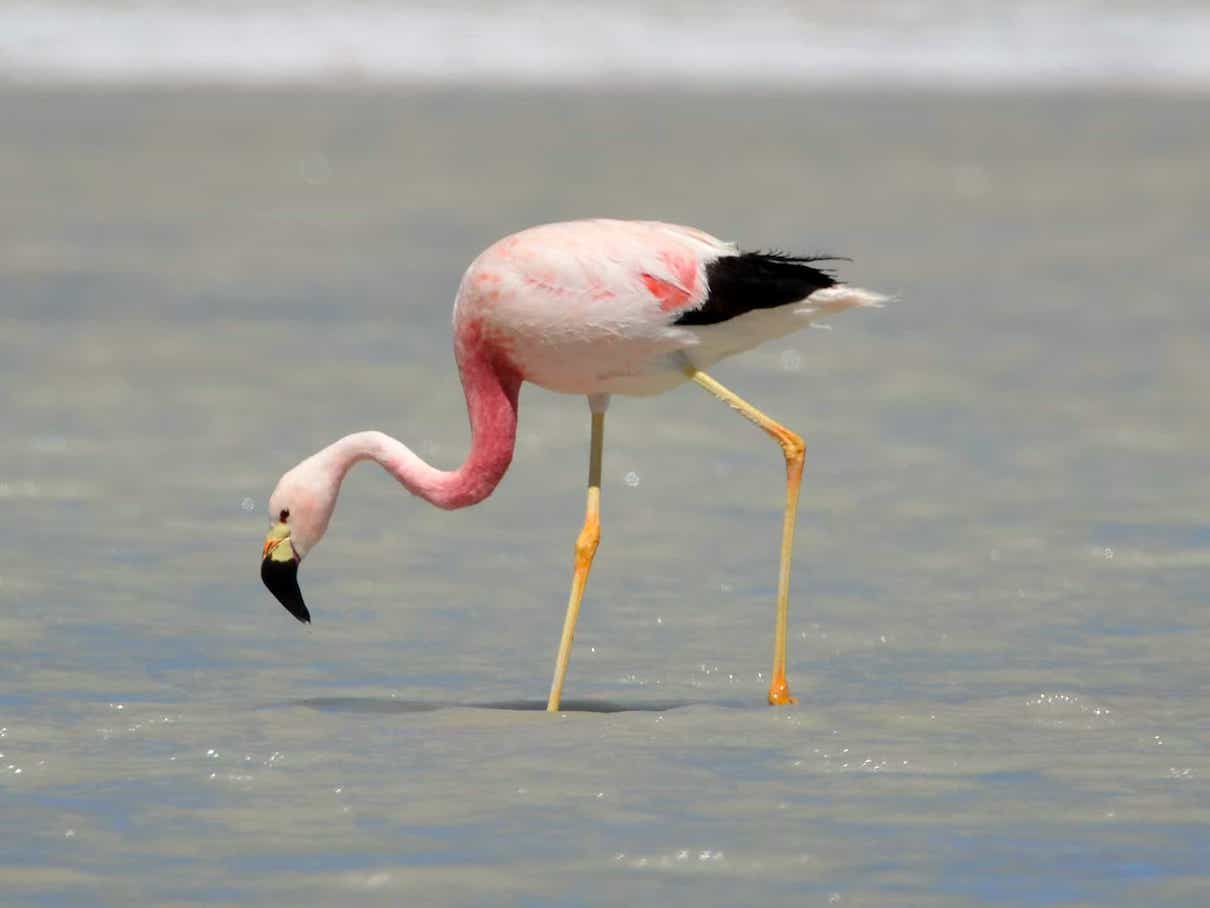- Flamingos, like humans, form social bonds that can last for years and appear to be important for survival in the wild, a new study shows.
- Researchers studying the bird’s social interactions at a captive center in the U.K. found they tended to make long-standing friendships rather than loose, random connections.
- In addition to the friends they tend to “hang out” with, flamingos also actively avoid some individuals.
- The findings could prove useful in managed breeding programs, to ensure that bonded flamingos aren’t separated from each other.

Flamingos form lasting friendships, but they also have foes. A new study, published in the journal Behavioural Processes, found that close social bonds existed not only between flamingo couples but also between same-sex friends and even groups of three or four. Flamingos also actively avoid some individuals, suggesting not all flamingos get along.
“Flamingos don’t simply find a mate and spend their time with that individual,” Paul Rose, a lecturer at the University of Exeter, research associate for the Wildfowl and Wetlands Trust (WWT), and corresponding author of the study said in a statement.
“Some mating couples spend much of their time together, but lots of other social bonds also exist … We see pairs of males or females choosing to ‘hang out’, we see trios and quartets that are regularly together,” Rose said.

Flamingos flock in large groups (called a flamboyance of flamingos) and are highly social, making them a great candidate for studying social choice. However, studying social interactions among wild flamingos can be quite difficult, so Rose and fellow researcher Darren Croft studied flocks of four different flamingo species at the Wildfowl and Wetlands Trust (WWT) Slimbridge Wetland Centre in the U.K. from 2012 through 2016.
“Our results indicate that flamingo societies are complex,” Rose said. “They are formed of long-standing friendships rather than loose, random connections … Flamingos have long lives — some of the birds in this study have been at Slimbridge since the 1960s — and our study shows their friendships are stable over a period of years.”

The study examined four species of flamingos: Caribbean (Phoenicopterus ruber), Chilean (Phoenicopterus chilensis), Andean (Phoenicopterus andinus) and lesser (Phoenicopterus minor). Flocks varied in size from 20 to more than 140, and the bigger the flock, the more social the birds were overall. Social interactions were also affected by season, with more bonds forming during the breeding season (spring and summer).
No clear connection was found between socializing and the health of birds. Bird health was measured in this study by looking at foot health. (Captivity is damaging to flamingos’ feet, for reasons that are still not completely understood by scientists.) Rose said the lack of correlation between health and socializing suggests the animals are benefiting by investing in relationships and that this socializing is important enough to occur even when the animals aren’t completely healthy.

“It seems that — like humans — flamingos form social bonds for a variety of reasons, and the fact they’re so long-lasting suggests they are important for survival in the wild,” he said.
Four of the six known species of flamingo have an IUCN conservation listing. The Andean flamingo is listed as vulnerable, and the puna (Phoenicoparrus jamesi), lesser and Chilean flamingos are all near threatened. Flamingos are threatened by habitat loss, pollution, disease and poaching.

These findings could prove useful if flamingos were put into managed breeding programs, Rose says, as “we would know how to measure the strength of social bonds and therefore how to measure changes in associates over time.”
“When moving birds from one zoo to another, we should be careful not to separate flamingos that are closely bonded to each other,” Rose said. Also, it may be beneficial to keep captive flamingos in larger groups. For flamingos, it appears that friends of a feather need to flock together.

Banner image of Caribbean flamingos in Cuba. By Gudkov Andrey via Shutterstock.
Citation: Rose, P. E., & Croft, D. P. (2020). Evaluating the social networks of four flocks of captive flamingos over a five-year period: Temporal, environmental, group and health influences on assortment. Behavioural Processes, 175, 104118. doi:10.1016/j.beproc.2020.104118
Liz Kimbrough is a staff writer for Mongabay. Find her on Twitter @lizkimbrough_
FEEDBACK: Use this form to send a message to the author of this post. If you want to post a public comment, you can do that at the bottom of the page.
